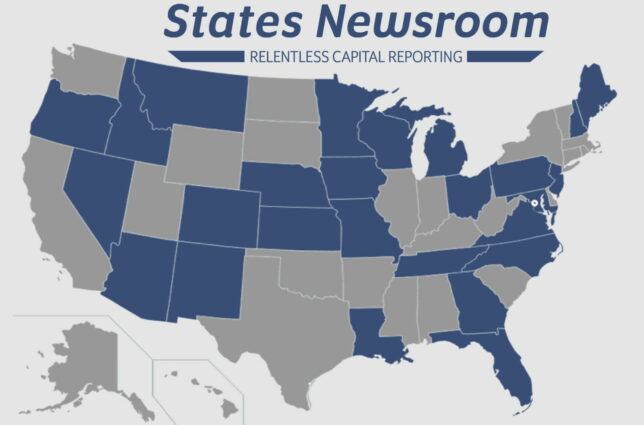Special Report
The Rise of Left-Wing Nonprofit Journalism


Editor’s Note: This is the introduction to a forthcoming CRC special report Nonprofits and Journalism: An Analysis of the Shifting Information Landscape and Potential Growth Opportunities.
The decline of traditional metropolitan “objective” media outlets has affected the news landscape dramatically. Those outlets were more liberal and less objective than they pretended, and their business model, which relied on advertising, has collapsed as online advertising has soared. This had led to targeted partisan journalism on the left and right, for business as well as political reasons. But while traditional outlets like the New York Times have moved further leftward, they and other national outlets have lost the trust of most Americans, who now place much more trust in state and local media.
In response, left-wing foundations have made massive investments in nonprofit journalism and related efforts. Most recently, liberal foundations led by the John D. and Catherine T. MacArthur Foundation have staked $500 million over five years in hopes of fundamentally upending the local news marketplace and buying the trustworthiness of local news to use as camouflage for left-wing propaganda. Thus, the Left continues to expand its existing state-level “nonprofit newsrooms” that distribute ideological agitprop. The largest is States Newsroom network; another is the Courier Newsroom. States Newsroom, spawned from the Arabella Advisors network, operates in 38 states and in 2021 spent $13.2 million, four times the closest center-right analog, Franklin News Foundation. Another right-leaning analog, Star News Digital Media, is even smaller.
The Left also works to boost its talent pipelines feeding into the media environment by focusing on diversity, equity, and inclusion (DEI) and leftist-aligned “communities”—an emphasis that strengthens the internal mobs at major outlets who brook no dissent from the radical line. Further leftward pressure comes from the NewsGuild–Communications Workers of America union, active in many prestigious outlets and far-left even by “social justice unionism” standards. It recently endorsed “Solidarity with the Palestinians from the river to the sea.”
Nonprofit efforts like ProPublica feed investigations picked up by larger outlets. These, too, have a strong leftward effect, as intended by ProPublica’s donors who fund, for example, not only numerous investigations into conservative Supreme Court justices (and no investigations into liberal justices) but also fund advocacy groups that demand court packing. ProPublica donors include the Sandler Foundation, which also funds Demand Justice; the Hewlett Foundation, which also funds Fix the Court; and Ford; Open Society; and others. This investigative journalism is a double-edged sword, one side sharpened to attack enemies, the other blunted to protect friends.
Social media are another avenue where the Left hopes to control information, but Elon Musk’s purchase of Twitter/X has hindered this crusade. In response, Pierre Omidyar has backed the phony “Facebook Whistleblower,” and Media Matters has launched pressure campaigns against Twitter’s advertisers.
Fact-checking groups assist with control of social media and political narratives. Here as everywhere in the media landscape, the Left enjoys more groups and more money than conservatives. Harvard’s Nieman Lab says, “Publishers hope fact-checking can become a revenue stream. Right now, it’s mostly Big Tech who is buying.” Nonprofit support comes from the usual suspects, including Soros, Tides, Ford, and Carnegie.
In 2022, the Democratic National Committee released a 5,000-word action plan for aggressive censorship, a.k.a. “combating online misinformation.” Social media statistics indicate earlier changes by Facebook and other platforms resulted in significant boosts for “mainstream” media outlets and equivalent losses for their competitors. Elon Musk’s “community notes” model for fact-checking on Twitter/X, which crowd-sources the work, is a dramatic improvement.
A related effort, NewsGuard, is suffering multiple federal lawsuits because of its likely illegal collusion with the federal government to suppress speech. NewsGuard provides an app for web browsers that puts labels next to news sources in online search results. The labels rate on a 0 to 100 scale, with nearly all “mainstream” outlets like the New York Times and NPR receiving 100s, despite their egregious misinformation on Russian collusion, COVID origins, and Hunter Biden’s laptop. Conservative outlets rate mediocre to bad.
The strategy, beyond working with federal agencies to suppress speech they dislike, is to spread NewsGuard into libraries and schools for use with mandatory “media literacy” courses. NewsGuard’s largest investor is Publicis Groupe, the world’s largest conglomerate of marketing agencies who already use a separate NewsGuard product that channels their ads away from disliked outlets to favored ones. Thus can investors protect their clients, just as the government protects itself from unwanted speech. But federal and state legislators could consider bans on governmental use of such third-party censorship schemes.
The Hub Project is another left-wing effort to use media for political purposes. Launched through the Arabella Advisors network with cash from foreign national Hansjörg Wyss, it aims to create “research-based messages frames” to “drive measurable change” and achieve “significant wins” that lead to “implementations of policy solutions at the local, state, and federal level”—cagey language designed to permit 501(c)(3) entities to fund and carry out much of this political work. This hidden scheme was exposed by the New York Times, with help from Capital Research Center. Outlets like Politico and The Atlantic credit it with significant “damage” to conservative political causes.
Despite all the Left’s money and groups, on the conservative side of the media landscape for-profit and nonprofit opportunities remain. Indeed, some of the best work exposing governmental malfeasance has recently come from left-leaning writers, many of them refugees from the corporate regime media, who have shifted to new, independent platforms where they cannot be cancelled by the powerful people and institutions they challenge. These voices may be called “government-” or “power-skeptical.”
Existing conservative efforts include the Franklin News Foundation and its Center Square. The foundation is a 501(c)(3) nonprofit, but it also owns two for-profit enterprises, the Illinois Radio network providing sports and statehouse coverage for 84 affiliates, and the Franklin Media Group, a marketing firm. Their profits subsidize the nonprofit news effort, whose supporters include the Scaife, Bradley, Searle, and Thomas W. Smith foundations.
Other conservative efforts are legally for-profit but likely require considerable annual subsidies (as does Jeff Bezos’s Washington Post), including the Washington Free Beacon (reported to be largely funded by Paul Singer), the Washington Examiner (reported to be owned by Phil Anschutz), and the New York Post (owned by Rupert Murdoch’s News Corp). The RealClear websites are also owned by a for-profit firm.
A different, more revolutionary approach would be to seed writers on Substack, a fast-growing enterprise that combines social media, multimedia, podcasting, and blogging for independent content creators. Those creators keep roughly 80 percent of email subscription fees they charge, which are typically around $50 per year. That means 2,000 subscribers would yield an independent creator $80,000 annually. Already some power-skeptical writers like Matt Taibbi and Bari Weiss have such large subscription bases, generating hundreds of thousands of dollars, that the creators have plowed revenues into hiring less famous journalists to join their originally solo Substack outlets. This resembles the way earlier talk radio entrepreneurs like Rush Limbaugh created new business models that had widespread political effect and were self-sustaining. Other existing Substack successes include Christopher Rufo and the Twitter/X celebrity known as Libs of TikTok. Donors could fund new voices with a program similar to MacArthur’s famous “genius grants,” which guarantee quarterly income across several years.
Another intriguing strategy involving established local newspapers is being mulled by Dave Smith, the executive chairman of Sinclair Broadcasting Group, which owns roughly 200 television stations. Sinclair has multiple stations in Michigan, Wisconsin, Pennsylvania, Nevada, North Carolina, and Georgia and it has local news departments in about 70 cities. It currently owns no radio or newspaper properties, though Smith personally bought the Baltimore Sun in January 2024.
Any paper he runs will follow the same model as his TV newsrooms: Focus on local crime, local political corruption, and local public schools’ failure, and teach reporters how to do the investigative reporting that breaks these stories. This model has worked in cities like Seattle, where he purchased the last-ranked station and within two years it was number-one. Smith is open to working with other investors in other cities and believes newspapers can remain self-sustaining without subsidies. Still living in his native Baltimore, Smith says he wants to help poor and middle-class citizens suffering in our dysfunctional cities, and he also believes that improving their lot will also mean weakening the corrupt left-wing establishment that controls those cities and, through those cities, wields political power it does not deserve.
In sum, the Left is taking journalism seriously. Is the Right?



